|
TBM Reunion/Salute to
Veterans
Independence Day
Warbird Events
Crossroads Airshow Practice Show
2023 Airshows
A Special Non-Airshow
Review
National Museum of World War II
Aviation TBM Engine Startup Photo Review
Colorado Springs Airport -
August 12, 2023 - Photos taken Saturday, August 12, 2023.
This review is not of an
airshow, but of my visit to the National Museum of World War II Aviation
in Colorado Springs, CO. While visiting the museum and taking a
tour of the WesPac restoration facilities co-located with the museum,
one of the museum's two TBMs started up for a test flight.
Included in the photos below are several photos of the work being
performed by WesPac and one of the museum's rarest aircraft.
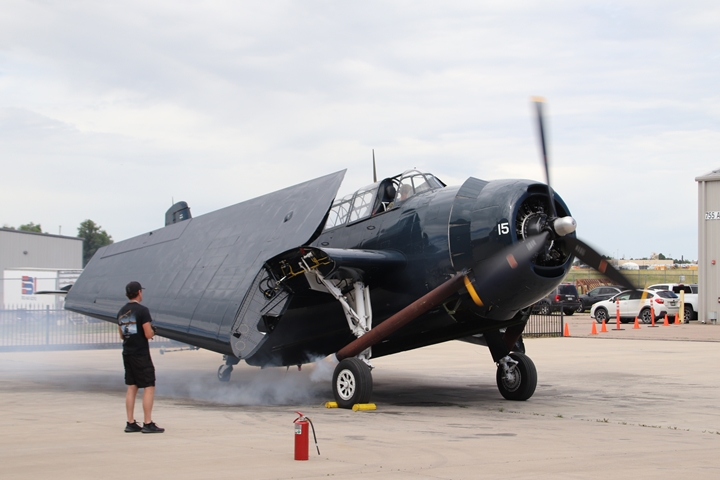
What caught my attention was the
long exhaust pipes on the aircraft. I had never seen this before.
In talking with one of the workers at the restoration center, the long
pipes are attached during startup to prevent oil from blowing back onto
the fuselage.

Once the aircraft was ready to
spread its wings and taxi, the ground crew removed the pipes.
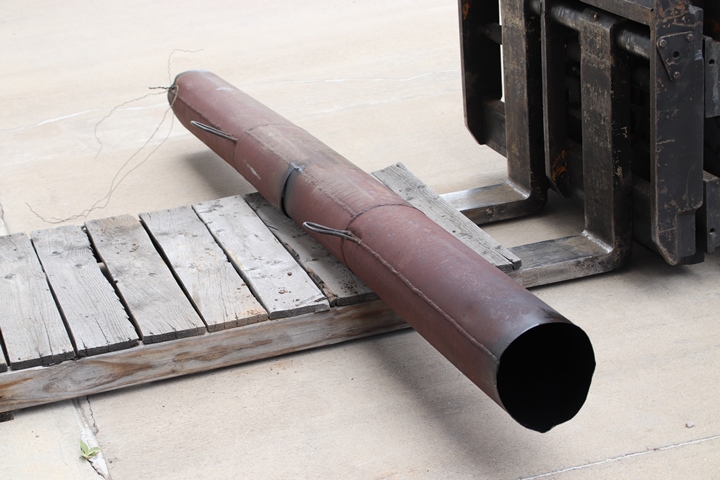
The pipe is a welded construction
of four sections of pipe with handles. There is wire at the far
end which wraps around the strut to hold it in place.
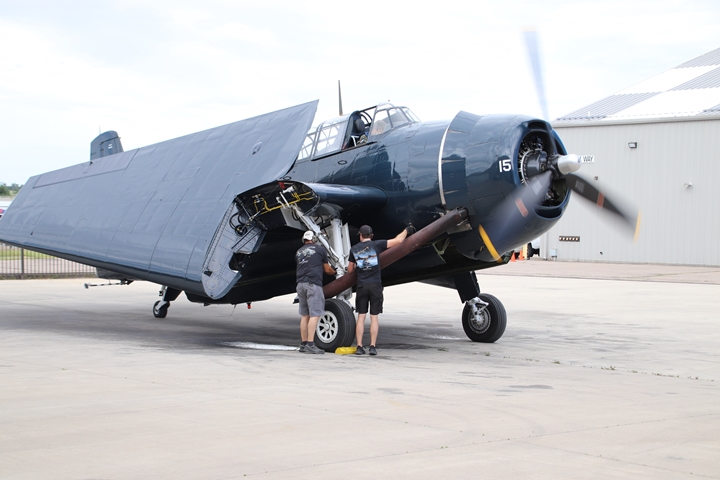
This pipe took two ground crewmen
to remove. One held it while the other untied the wire attached to
the strut.

The museum hangars and restoration
hangar are separated from the airport's runways by a fence. As the
TBM taxies out, ground crew opened the gate to allow the aircraft access
to the runway. Two of the museum's original display hangars can be
seen in this photo. There is another large yet unseen display
hanger off to the right of the TBM.
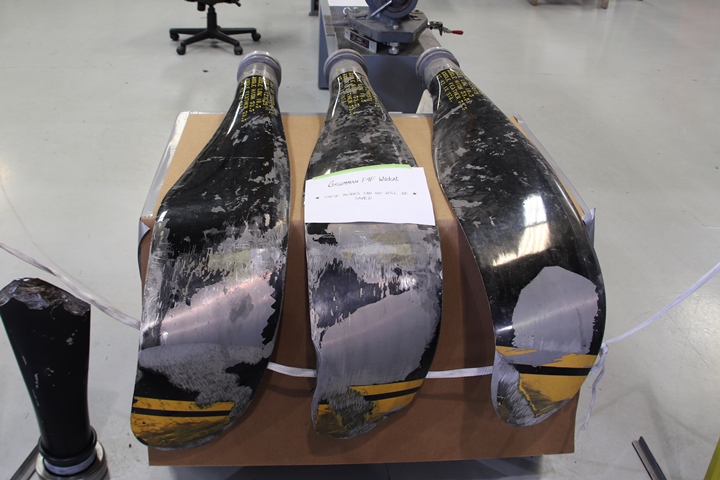
WesPac has a prop shop
which repairs propellers for non-museum customers. These three
blades, which are labeled as being from a Grumman F4F, are surprisingly
repairable. Before they are bent back into shape, they first go to
a heat treat shop to be annealed to reduce their hardness and increase
their ductility. In the current state, they are too hard and
brittle to straighten out.

This image shows some of the prop
shop.

In the main restoration shop is
this Curtiss SB2C-1A Helldiver. This aircraft started its life as
a U.S. Army Shrike and was then transferred to the USMC as a training
aircraft. After a hard landing after World War Two, it was
stripped for usable parts and then used in firefighting tests.
When it was no longer needed, it was disposed of in Lake Washington, WA.
It was retrieved from the
lake in the 1980s.
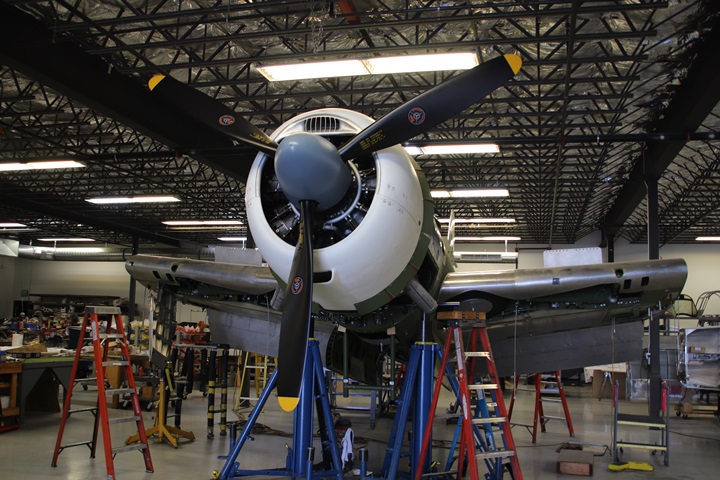
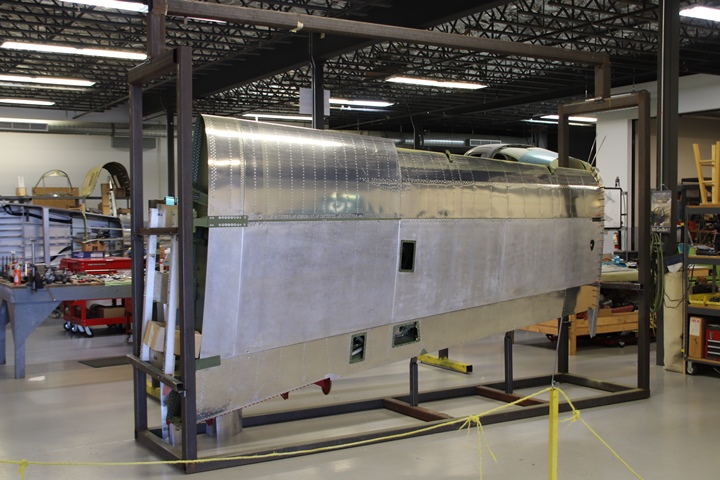

This Brewster-built F3A-1 Corsair
is the only one of the 735 of these aircraft still in existence. I
spent several minutes talking with one of the workers in the restoration
shop about this aircraft. He noted that while Brewster had its
problems during World War Two and has a tarnished reputation, the person
that restored this aircraft noted that this aircraft was built to
specifications and there were no quality issues with it.
During World War Two, this F3A-1A
was assigned as a training aircraft at USMC Air Station Cherry Point,
NC. During a training flight the pilot bailed out of the aircraft
but was killed in the landing. The aircraft glided into a swamp
where it was recovered in 1990.
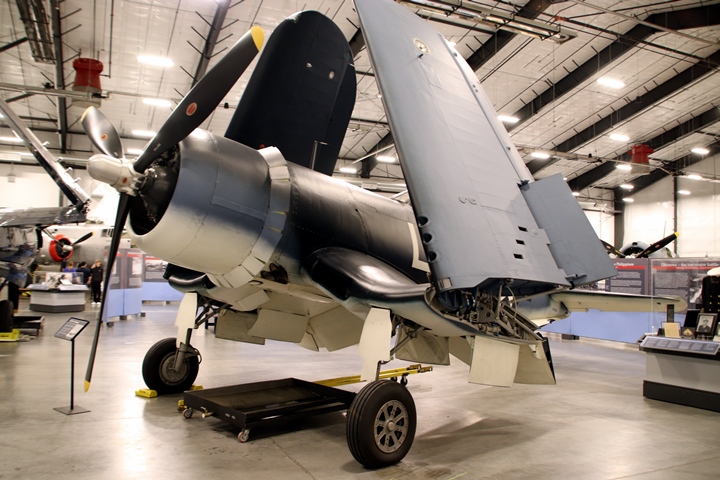
The museum has 28 fully restored
and flyable aircraft in its collection. The portable oil pan
underneath the F3A-1 shows that this is a flyable aircraft.
The Corsair is located in the
museum's main hangar that was built in 2019. I visited the museum
in 2017 when I was in Colorado Springs for the museum's bi-annual
airshow. I was surprised on my most recent return to find this
large new display hangar as part of the museum. Not only does it
include many of the museum's flyable aircraft, but it also contains many
displays and artifacts that were not on display in 2017. This has
become a first class World War Two aviation museum and is well worth a
visit.
|











